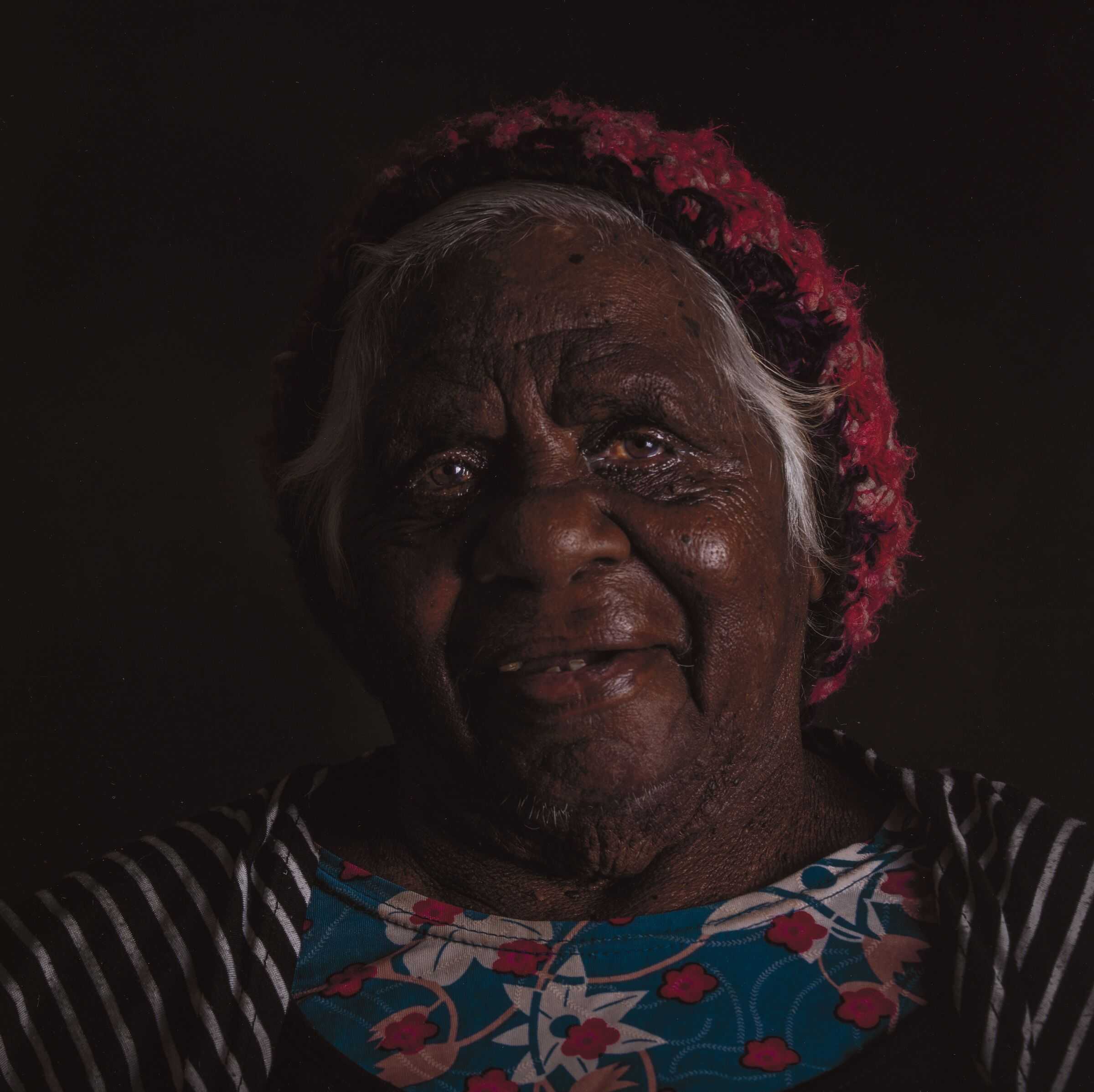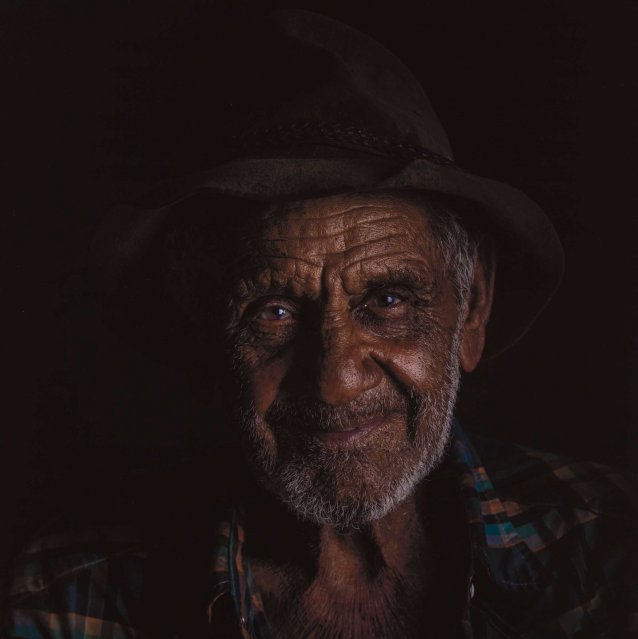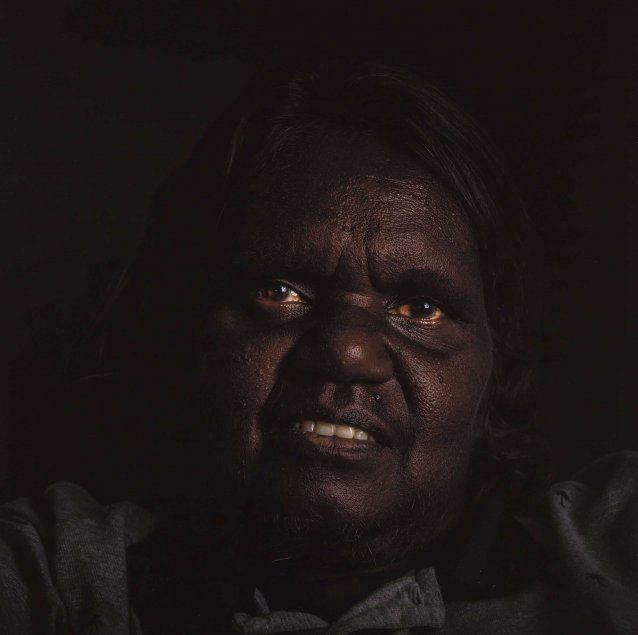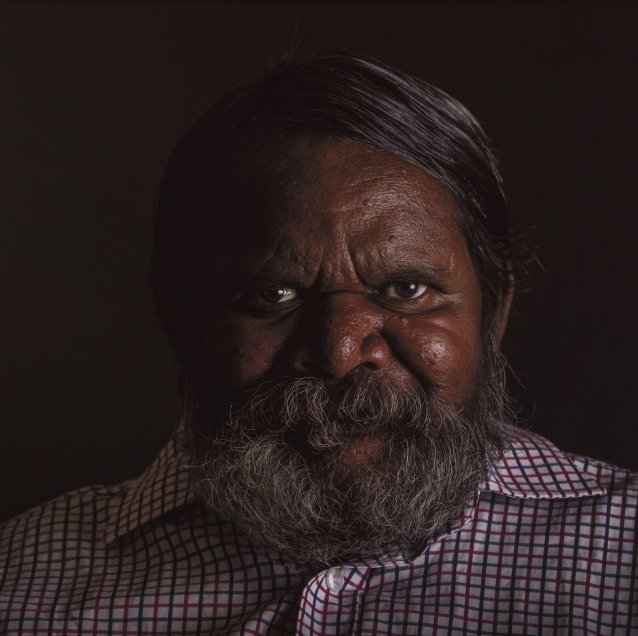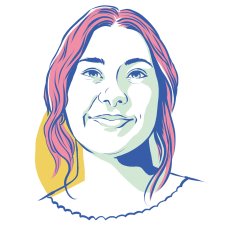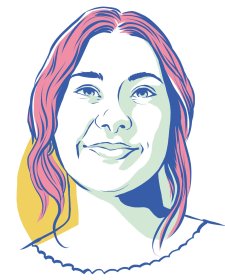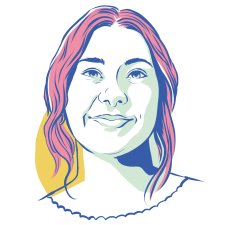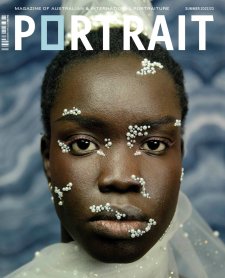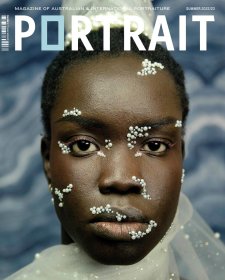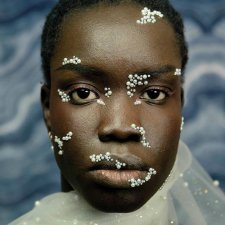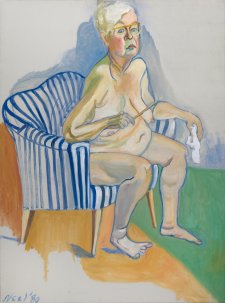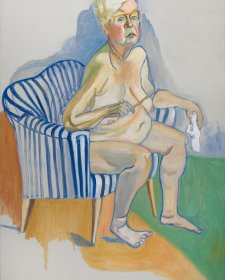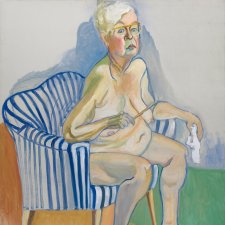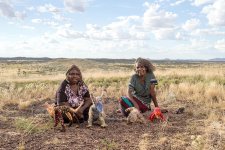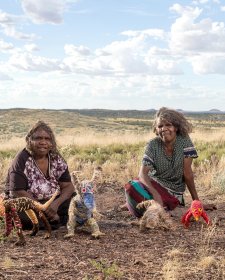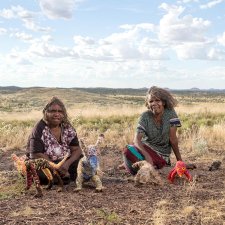Standing in front of Robert Fielding’s photographs of An-angu Pitjantjatjara Yankunytjatjara (APY) Traditional Owners, I feel a sense of cultural energy. Each of the 24 faces stares out at me, their eyes drawing me in. Up close I see how technically beautiful each photograph is, the slightly off-centre composition, the gentle tonal range of oranges, browns and blacks. These works are intimate painterly portraits, pushing well beyond the realm of social documentary.
An artist of Pakistani, Afghan, Western Arrernte and Yankunytjatjara descent, Fielding lives in the community of Mimili, in the far north west of South Australia on the remote APY Lands. A former cattle station, Everard Park, Mimili was returned to Aboriginal ownership through the 1981 APY Land Rights Act. Storylines relating to this manta (land) traditionally belong to the Yankunytjatjara people, but today approximately 250 Pitjantjatjara and Yankunytjatjara people live in Mimili united as walytja (family) as An-angu.
